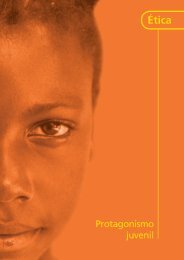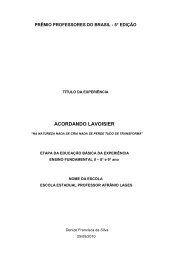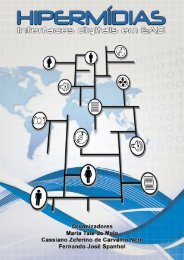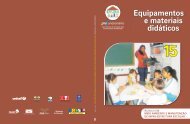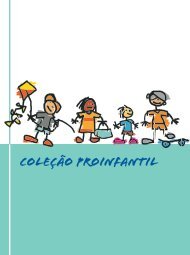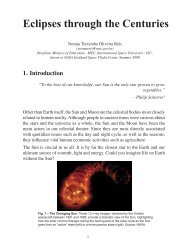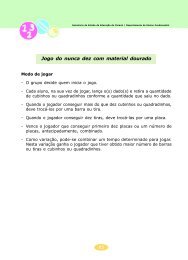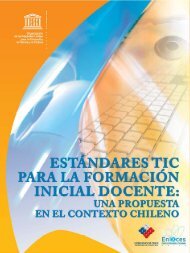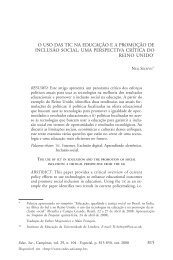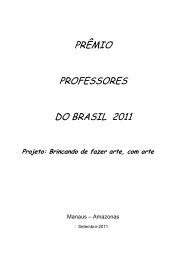BIO-CULTURAL COMMUNITY PROTOCOLS - Portal do Professor
BIO-CULTURAL COMMUNITY PROTOCOLS - Portal do Professor
BIO-CULTURAL COMMUNITY PROTOCOLS - Portal do Professor
Create successful ePaper yourself
Turn your PDF publications into a flip-book with our unique Google optimized e-Paper software.
APPENDIX<br />
A notable feature of the community is the deep split that<br />
runs between its educated and non-educated members.<br />
On the one hand, Formal education has been inculcating a<br />
sense of disdain for traditional knowledge and lifestyles into<br />
the young people and political leaders appeal to herders to<br />
“stop running after the tails of their animals”. A group of welleducated<br />
Raika in elevated positions in society has established<br />
an educational trust that coaches young Raika to prepare<br />
them for professional careers. These efforts are necessary<br />
because the increase in population precludes every young<br />
Raika from becoming a pastoralist. Yet, the same group sees<br />
no merit in their pastoralist heritage and seems disinterested<br />
in promoting and preserving the community’s history<br />
and culture.<br />
On the hand, active herders and especially the elders (panches)<br />
are very opposed to calls to aban<strong>do</strong>n their animals and<br />
usually <strong>do</strong> not provide proponents with any political support.<br />
The panches revel in their traditional customs and their former<br />
glory as independent herders; and are also are in charge of<br />
sorting out community problems. While their decisions can<br />
be considered wise, they often mete out punishments which<br />
seem unwarranted to onlookers. For this reason, there is also<br />
widespread disgruntlement with these traditional institutions<br />
and in some locations they have been dissolved by<br />
the communities.<br />
The Raika usually list three reasons why livestock keeping<br />
has become unattractive for them: loss of grazing areas,<br />
problems of animal diseases and lack of respect for their way<br />
of life and traditions. The group of Raika which established<br />
the bio-cultural community protocol (BCP) has especially<br />
suffered from the loss of their grazing rights in the Kumbalgarh<br />
Sanctuary which represents their traditional rainy season<br />
ground and for which they had grazing privileges during<br />
the times of the Maharajahs. With the help of Lokhit Pashu-<br />
Palak Sansthan, they have engaged in an extended legal battle<br />
to resurrect their rights, a battle with many ups and <strong>do</strong>wns<br />
and that has been fought both at the Rajasthan High Court<br />
as well as at the Supreme Court in New-Delhi. The latest<br />
episode relates to the “Forest Rights Act” whose a<strong>do</strong>ption by<br />
parliament as law was hailed as a major step forward since it<br />
was extended to include pastoralists after lobbying by the<br />
LIFE-Network. Unfortunately, there are powerful interests,<br />
including the wildlife lobby, against this Act and politicians,<br />
including some who purport to support the Raika and even<br />
hail from the community, have been conniving to undermine<br />
and ignore the implementation of this legal framework.<br />
THE MEANING OF THE RAIKA <strong>BIO</strong>-<strong>CULTURAL</strong> PROTOCOL<br />
FOR LIVELIHOODS AND <strong>BIO</strong>DIVERSITY CONSERVATION<br />
While the Raika currently have access to the Kumbalgarh<br />
Sanctuary, this is due to a silent agreement with local forest<br />
officials and without solid legal basis. It is this uncertainty<br />
about their legal position and status that makes it risky for<br />
the Raika to put focus solely on herding. It is also at this<br />
juncture where the process of establishing the BCP was of<br />
enormous importance because it made the Raika aware of<br />
the rights that they actually have and because the written<br />
version includes a summary of all relevant laws that can serve<br />
as a reference point for lawyers that they may hire.<br />
Another crucial aspect of the BCP is that is highlights the<br />
international and global value attached to the knowledge<br />
and lifestyle of the Raika from the perspective of biodiversity<br />
conservation. It thereby sends a message to two groups of<br />
people: the educated Raika who would like nothing better<br />
than to dissociate themselves from their heritage and history<br />
and recast themselves as modern Indians. The second group<br />
is government officials, especially technical ones from the<br />
Department of Animal Husbandry who have traditionally<br />
looked <strong>do</strong>wn upon the Raika and their way of keeping animals.<br />
Despite the lure of the city, herding traditions are still strong<br />
and at the time of writing huge deras (groups of Raika going<br />
on long distance migration with thousands of sheep, goats<br />
and camels) are walking south on the new four-lane highway<br />
to Udaipur in search for greener pastures. The Bio-cultural<br />
Protocol will support appreciation of this traditional way<br />
of life as an astute response to drought and climate change<br />
rather than a colorful but otherwise quaint and<br />
outdated phenomenon.<br />
A Raika woman and camel<br />
75




